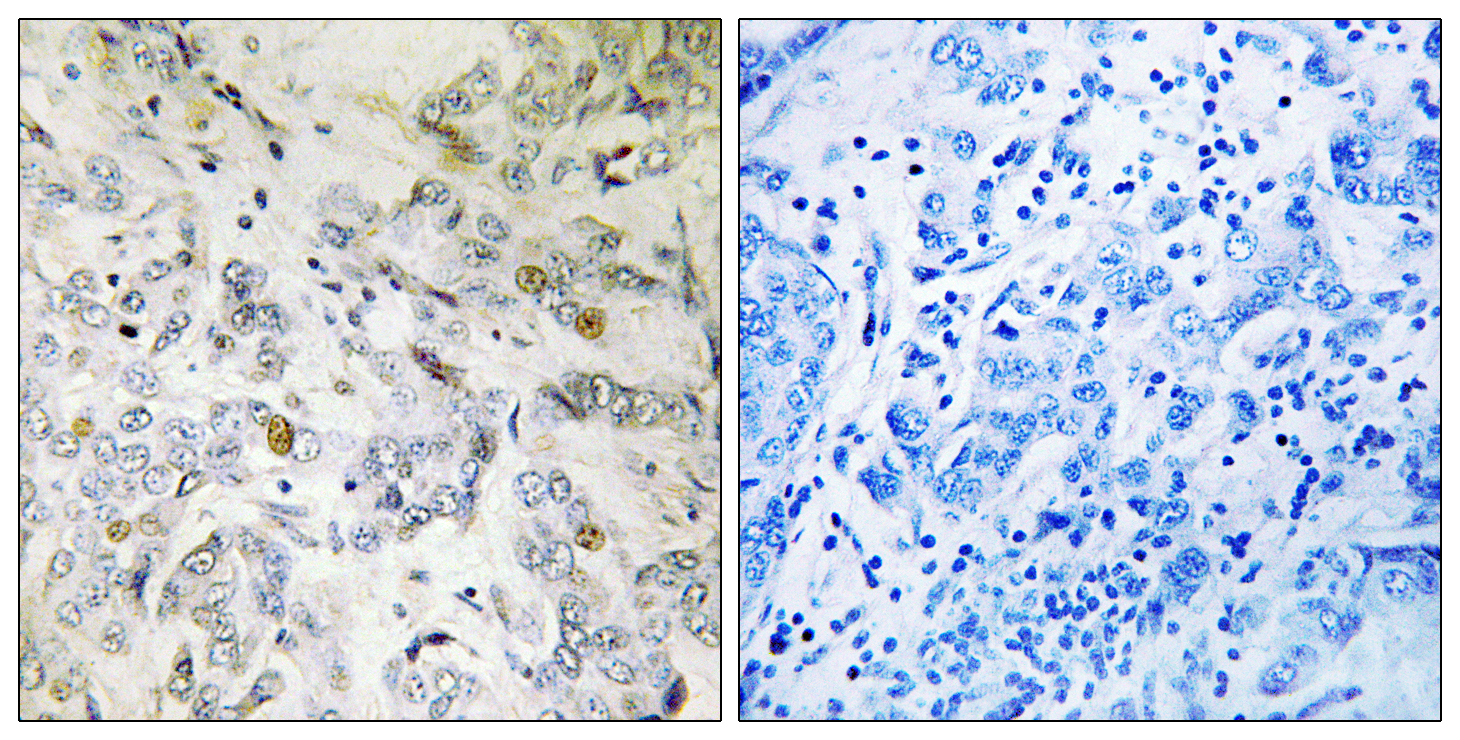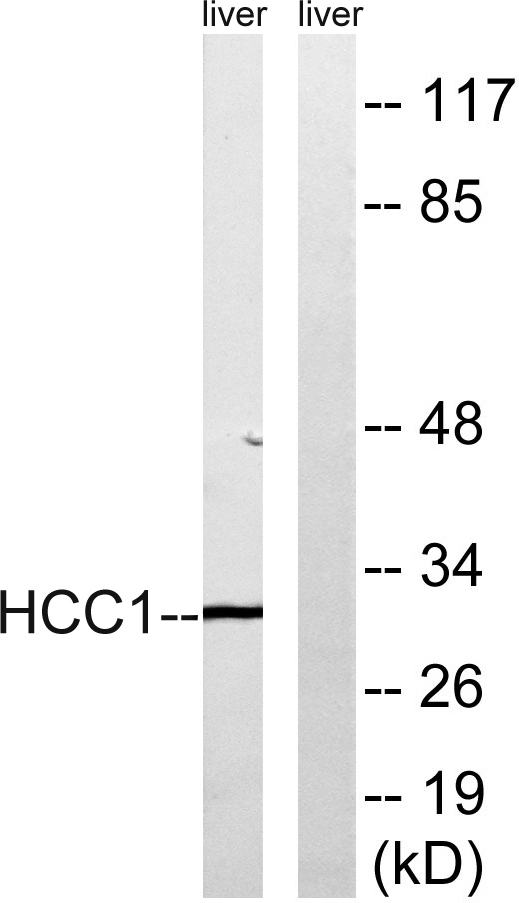CIP29 Polyclonal Antibody
- Catalog No.:YT0930
- Applications:WB;IHC;IF;ELISA
- Reactivity:Human;Mouse;Rat
- Target:
- CIP29
- Gene Name:
- SARNP
- Protein Name:
- SAP domain-containing ribonucleoprotein
- Human Gene Id:
- 84324
- Human Swiss Prot No:
- P82979
- Mouse Gene Id:
- 66118
- Mouse Swiss Prot No:
- Q9D1J3
- Rat Gene Id:
- 362819
- Rat Swiss Prot No:
- Q498U4
- Immunogen:
- The antiserum was produced against synthesized peptide derived from human HCC1. AA range:147-196
- Specificity:
- CIP29 Polyclonal Antibody detects endogenous levels of CIP29 protein.
- Formulation:
- Liquid in PBS containing 50% glycerol, 0.5% BSA and 0.02% sodium azide.
- Source:
- Polyclonal, Rabbit,IgG
- Dilution:
- WB 1:500 - 1:2000. IHC 1:100 - 1:300. ELISA: 1:10000.. IF 1:50-200
- Purification:
- The antibody was affinity-purified from rabbit antiserum by affinity-chromatography using epitope-specific immunogen.
- Concentration:
- 1 mg/ml
- Storage Stability:
- -15°C to -25°C/1 year(Do not lower than -25°C)
- Other Name:
- SARNP;HCC1;HSPC316;SAP domain-containing ribonucleoprotein;Cytokine-induced protein of 29 kDa;Nuclear protein Hcc-1;Proliferation-associated cytokine-inducible protein CIP29
- Observed Band(KD):
- 30kD
- Background:
- This gene encodes a protein that is upregulated in response to various cytokines. The encoded protein may play a role in cell cycle progression. A translocation between this gene and the myeloid/lymphoid leukemia gene, resulting in expression of a chimeric protein, has been associated with acute myelomonocytic leukemia. Pseudogenes exist on chromosomes 7 and 8. Alternatively spliced transcript variants have been described. [provided by RefSeq, Feb 2009],
- Function:
- transcription, regulation of transcription, DNA-dependent, regulation of translation, posttranscriptional regulation of gene expression, regulation of cellular protein metabolic process, regulation of transcription, regulation of RNA metabolic process,
- Subcellular Location:
- Nucleus. Nucleus speckle.
- Expression:
- Low expression in spleen, liver, pancreas, testis, thymus, heart, and kidney. Increased levels are seen in hepatocellular carcinoma and pancreatic adenocarcinoma.
- June 19-2018
- WESTERN IMMUNOBLOTTING PROTOCOL
- June 19-2018
- IMMUNOHISTOCHEMISTRY-PARAFFIN PROTOCOL
- June 19-2018
- IMMUNOFLUORESCENCE PROTOCOL
- September 08-2020
- FLOW-CYTOMEYRT-PROTOCOL
- May 20-2022
- Cell-Based ELISA│解您多样本WB检测之困扰
- July 13-2018
- CELL-BASED-ELISA-PROTOCOL-FOR-ACETYL-PROTEIN
- July 13-2018
- CELL-BASED-ELISA-PROTOCOL-FOR-PHOSPHO-PROTEIN
- July 13-2018
- Antibody-FAQs
- Products Images

- Immunohistochemistry analysis of paraffin-embedded human breast carcinoma tissue, using HCC1 Antibody. The picture on the right is blocked with the synthesized peptide.

- Western blot analysis of lysates from mouse liver, using HCC1 Antibody. The lane on the right is blocked with the synthesized peptide.



